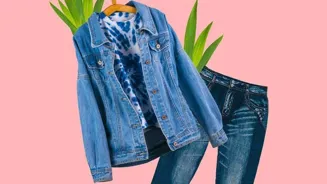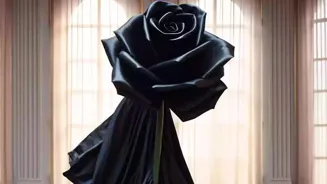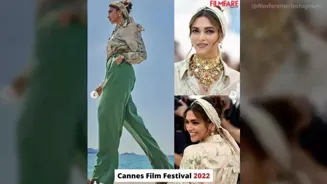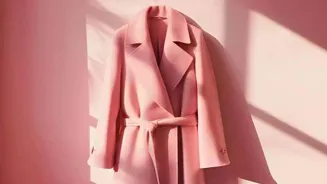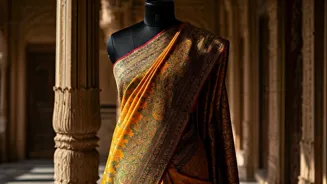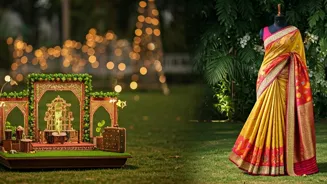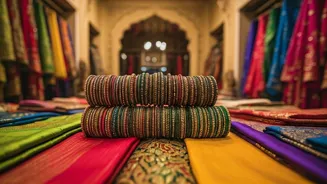Discover Fashion Evolution: 7 Decades of Indian Style Transformation. Dive into iconic trends and cultural shifts
From the saree-clad elegance of the post-Independence era to the athleisure obsession of today,
Indian fashion has seen a whirlwind of change. It's a journey woven with threads of tradition, global influences, and the ever-evolving aspirations of a diverse nation.
Let's take a nostalgic trip through seven decades that have definitively shaped modern Indian style, exploring the trends, icons, and cultural shifts that defined each era. We shall see how these things changed fashion for Indian women and to some extent, men.
1950s India: Embracing simplicity, femininity through sarees, subtle jewelry, traditional crafts
The 1950s in India were all about embracing simplicity and celebrating femininity. After gaining Independence, there was a sense of national pride, reflected in the clothing choices. Sarees were the undisputed queen, draped elegantly and often paired with simple blouses.
Fabrics like cotton and silk were favoured, adorned with subtle prints and embroidery. Actresses like Nargis Dutt and Madhubala embodied this era's grace, their sartorial choices influencing women across the country.
Jewellery was understated, with small earrings and delicate necklaces completing the look. This period was about embracing Indian identity and celebrating traditional crafts.
The swinging sixties reshaped Indian fashion with modernity and global influences
The swinging sixties brought a burst of modernity to Indian fashion, heavily influenced by Bollywood and global trends. The introduction of synthetic fabrics like nylon and rayon made clothing more affordable and accessible.
Fitted kurtas and churidars became popular, often paired with vibrant colours and bold prints. The 'bouffant hairstyle,' popularised by actresses like Sadhana, became a must-have. Western influences were undeniable, with bell-bottoms and mini skirts making their debut in urban centres.
This decade saw a fusion of traditional and modern elements, creating a unique Indian adaptation of global fashion trends. Lehengas were also modified to suit the period with new designs which quickly got popular.
1970s Indian fashion embraced hippie culture with loose, ethnic styles
The 1970s marked a period of experimentation and self-expression in Indian fashion. The hippie culture made its impact, with loose, flowing garments, tie-dye prints, and bell sleeves becoming popular. Ethnic prints and handcrafted textiles like Khadi gained newfound appreciation.
The maxi dress became a wardrobe staple, offering comfort and style. Accessories like chunky jewellery, headbands, and large sunglasses completed the look. This decade was about celebrating individuality and embracing a more relaxed, bohemian aesthetic.
1980s Indian fashion: bold, extravagant, disco-inspired, power dressing, Bollywood trends
The 1980s were all about boldness and extravagance in Indian fashion. The disco culture influenced clothing choices, with bright colours, shiny fabrics, and exaggerated silhouettes dominating the scene. Power dressing became popular, with women embracing tailored suits and statement jewellery.
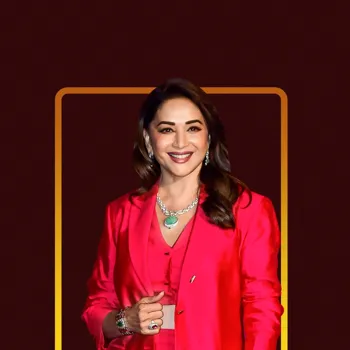
Bollywood played a significant role in setting trends, with actresses like Sridevi and Madhuri Dixit becoming fashion icons. This era was about making a statement and embracing a more glamorous, confident style.
Indian designers shine in 1990s minimalism trend globally
The 1990s ushered in an era of minimalism and saw the rise of Indian designers on the global stage. Clean lines, simple silhouettes, and neutral colours became popular. Designer labels like Ritu Kumar and Abu Jani-Sandeep Khosla gained prominence, showcasing Indian craftsmanship with a modern twist.
The influence of global fashion trends was evident, with slip dresses and cargo pants becoming wardrobe staples. This decade was about understated elegance and the emergence of a distinct Indian design aesthetic.
2000s fusion of Indian & Western styles influenced by Bollywood & global media
The 2000s saw a rapid fusion of Indian and Western styles, driven by globalisation and the rise of media, particularly television. Low-waist jeans, crop tops, and miniskirts became popular among the youth.
The 'Bollywood' look continued to influence fashion, with actresses sporting elaborate outfits and hairstyles in films and public appearances. Indian designers started showcasing their collections at international fashion weeks, gaining recognition and influencing global trends.
Bollywood actresses became international figures and icons.
Rise of athleisure, sustainable fashion, body positivity in 2010s
The 2010s and beyond have been marked by the rise of athleisure, sustainable fashion, and body positivity. Comfort and functionality are key, with leggings, hoodies, and sneakers becoming everyday staples.
Sustainable and ethical fashion is gaining traction, with consumers becoming more conscious of the environmental and social impact of their clothing choices. Body positivity is also influencing fashion, with brands embracing inclusivity and celebrating diverse body types.
As we move forward, Indian fashion continues to evolve, blending tradition with innovation and reflecting the changing values and aspirations of a new generation. The latest fad is wearing sneakers with sarees and ethnic wear.
AI Generated Content. Glance/InMobi shall have no liability for the content